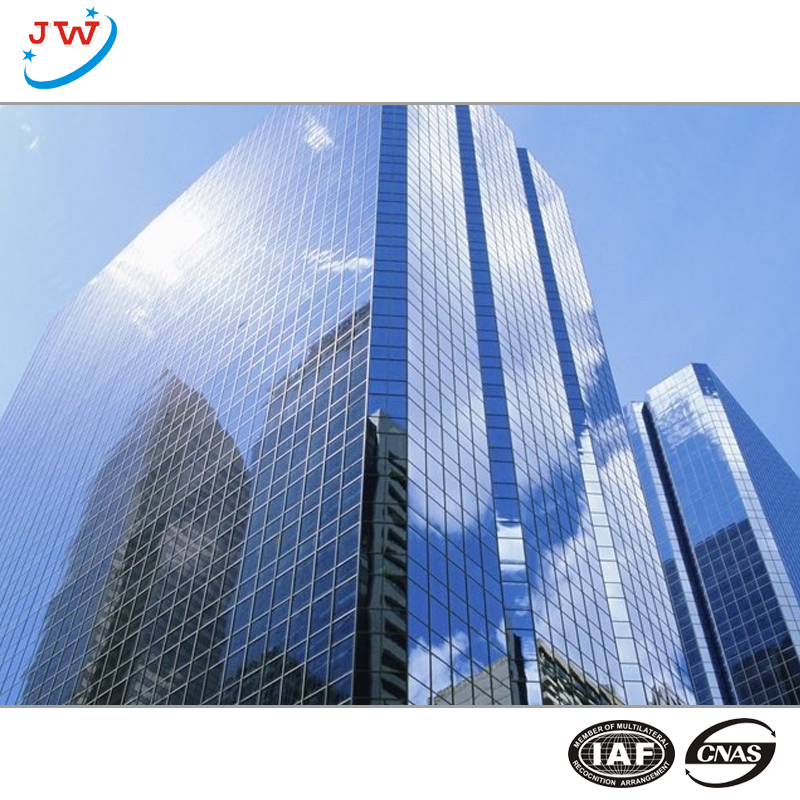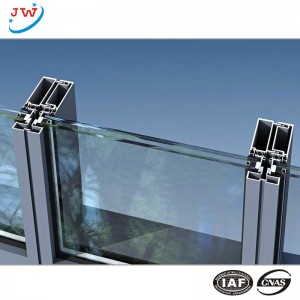If you want your commercial building to have a glass-covered appearance, you may consider using curtain walls during project development. The advantages, disadvantages and functions of glass curtain wall are introduced in detail in the following content.
What are the advantages of glass curtain wall?
1. They are very good at isolating air and water
The glass curtain system is famous for its ability to prevent air and water from permeating. They have fewer vertical frames, which are structural elements that form a separation between each glass panel, especially compared to the window wall system. Because the glass curtain wall system has fewer structural components, there is less chance for elements to penetrate it.
2. They reduced the sway of the building
In high-rise buildings, the sway of buildings may make residents feel uncomfortable. Glass curtain walls help reduce sway by spreading power across the frame, which also makes it safer.
3. They are more energy efficient
In particular, proper glass curtain walls will improve the thermal efficiency of the building and reduce operating costs. In addition, the external glass system works by reducing the amount of ultraviolet light that can penetrate into the interior of the building.
What are the disadvantages of the curtain wall?
Having said that, compared with other wall systems, glass curtain walls do have some disadvantages. You must take these shortcomings into account when weighing your decisions, so you will determine whether the curtain wall suits you.
1. They are more expensive than windows and walls
The main disadvantage of glass curtain wall is that its construction and maintenance cost is higher than that of other wall systems. During the construction phase, they require more glass and aluminum than window-wall systems, which is achieved by simply placing glass between each floor of the building.
Over time, glass and aluminum become prone to rust and mineral deposits, which means regular maintenance.
2. They are more difficult to install
Glass curtain walls are installed from the outside, which means that their installation may be delayed due to adverse weather conditions. By contrast, the window-wall system is installed from the interior of the building. This type of installation can usually be done faster and cheaper.
3. Bottom line
Glass curtain walls have many advantages, especially if your main goal is to make buildings safe and energy efficient. In other words, these advantages do come at a price. If you are considering using a glass curtain wall as your building envelope, weigh the pros and cons carefully to determine whether the design element is the right choice for your next building project.
The function of Building Glass Curtain Wall
1. Eliminate water seepage
Permeation is the basic function of the facade. It is impossible to bring a completely impervious curtain panel system here. Therefore, two prevention phases have been set up. The primary level of complete defense against water, if it does not reach the secondary level, must provide a direction for the permeable water to be discharged.
2. Impermeability
This function is more of an environmental issue to reduce carbon dioxide emissions due to heat loss or gain in the external and internal environment.
3. Wind resistance, heat resistance and acoustics
The wind action is transferred from the cladding system to the building floor that acts as a linear support. The building coating system formed by large panels is usually one-way across. Therefore, each floor supports a wind load on the building. In order to reduce energy consumption and CO 2 emissions, the exterior wall must be insulated. Provide insulation for opaque and transparent areas. Sound insulation is also needed between the interior and exterior environment of city-centered buildings. Large structural elements have a higher sound insulation effect, such as masonry or concrete structures.
3. Solar energy level
This can be reduced by providing a selective sunlight control coating on one surface of the glass. This coating is called a selective coating because different wavelengths of solar radiation are selectively allowed to pass through the coating: light at visible wavelengths passes more freely than infrared wavelengths. For example, the space used for exhibitions or display materials may be degraded by ultraviolet radiation. For this reason, the ultraviolet inhibition film can be applied to the surface of the glass window.
The above is the introduction of the glass curtain wall. if you want to know more about the glass curtain wall, you are welcome to contact us.
Learn more about JINGWAN products
Post time: Feb-10-2022


